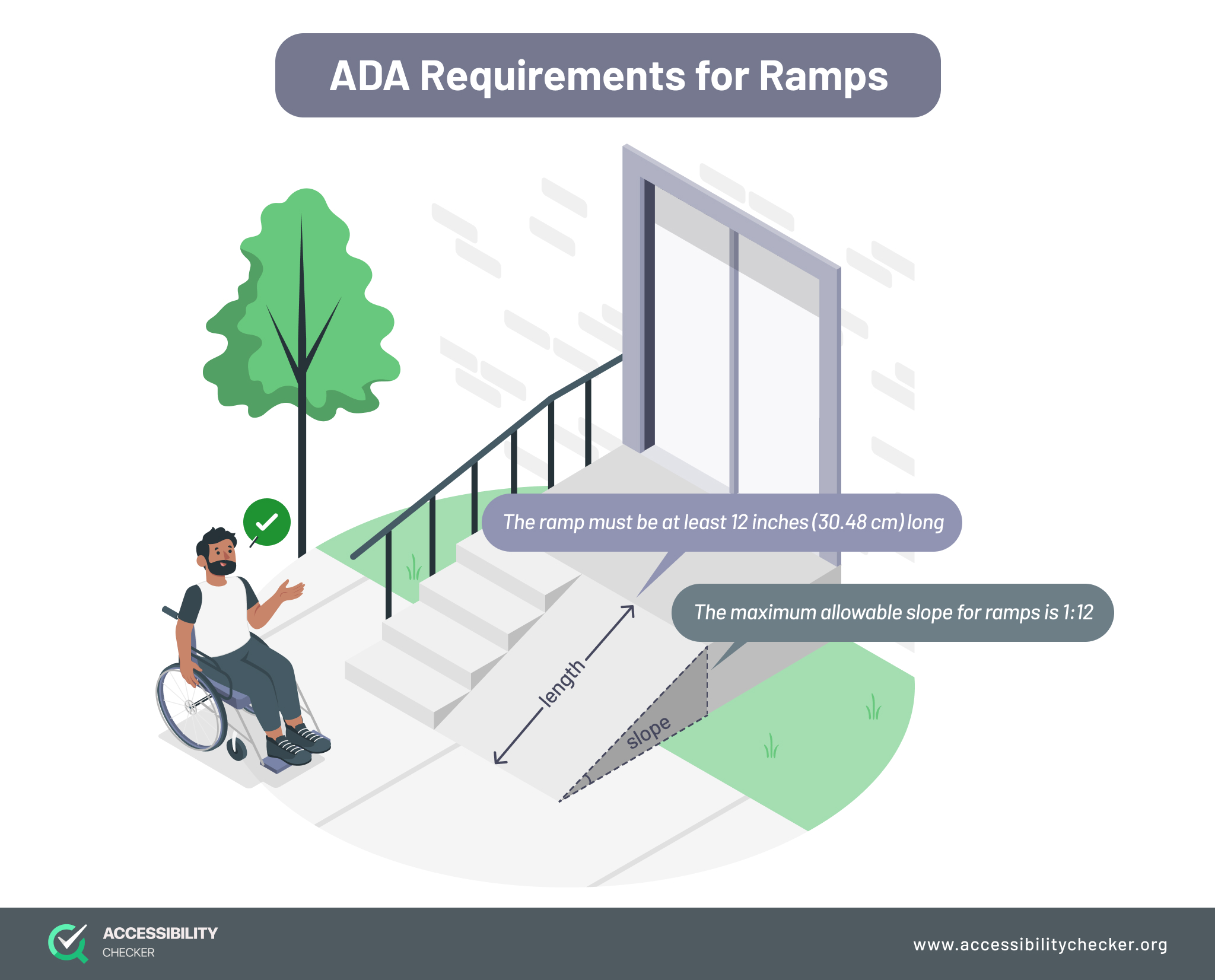Ramps are essential architectural features in buildings, designed to provide an accessible and safe sloped pathway, bridging changes in level. They are crucial for ensuring inclusivity for individuals with mobility impairments, including wheelchair users, those with strollers, or people using walking aids.
Key Design Principles for Ramps
Effective ramp design adheres to specific standards to ensure usability and safety:
- Slope (Gradient): The steepness of the ramp is critical. Generally, a gentler slope, typically not exceeding 1:12 (one unit of vertical rise for every twelve units of horizontal run), is preferred for unassisted manual wheelchair use. Some regulations may allow steeper slopes for shorter distances or with assisted use.
- Width: Ramps must possess a clear, unobstructed width sufficient to accommodate a wheelchair and allow for maneuverability. Common minimums often range from 900mm to 1200mm (approximately 36 to 48 inches), depending on local codes and expected traffic.
- Landings: Flat, level landings are required at the top and bottom of each ramp run. Intermediate landings are also necessary for long ramps (e.g., every 9 meters or 30 feet of run) and wherever a ramp changes direction. Landings allow users to rest and navigate turns safely.
- Handrails: Continuous handrails on both sides of the ramp are vital for support, stability, and guidance, especially for individuals with ambulatory disabilities. They should be at a consistent, ergonomic height and offer a secure grip.
- Surface: The ramp surface must be firm, stable, and slip-resistant under all weather conditions. Materials chosen should minimize glare and provide adequate traction.
- Edge Protection: Curbs, raised edges, or barriers along the sides of the ramp are necessary to prevent wheels from slipping off and to guide users. These are typically a minimum height (e.g., 50mm or 2 inches).
Benefits of Ramps in Buildings
Incorporating well-designed ramps into building architecture offers significant advantages:

- Enhanced Accessibility: This is the primary benefit, ensuring equitable access for people with diverse mobility needs, promoting independence and participation.
- Improved Safety: Ramps offer a safer alternative to stairs for many individuals, including those using mobility aids, parents with strollers, and people carrying heavy items.
- Universal Design Adherence: Ramps are a cornerstone of universal design, creating environments that are usable by the broadest range of people without the need for specialized adaptations.
- Regulatory Compliance: Most modern building codes and accessibility standards (such as the Americans with Disabilities Act Accessibility Guidelines - ADAAG, or BS 8300 in the UK) mandate the inclusion and specific design of ramps.
- Operational Convenience: Beyond personal mobility, ramps facilitate the movement of goods, equipment, and trolleys, improving operational efficiency in various settings.
Common Applications of Ramps
Ramps are integral to accessibility in a wide array of building types and public spaces:
- Public and Institutional Buildings: Including hospitals, healthcare facilities, educational institutions, government offices, libraries, and museums.
- Commercial Structures: Such as retail outlets, shopping centers, office buildings, hotels, and restaurants.
- Residential Buildings: Multi-family housing units, apartment complexes, and increasingly, private residences for aging-in-place or to accommodate specific accessibility needs.
- Transportation Hubs: Airports, railway stations, subway systems, and bus terminals where seamless level changes are critical.
- Recreational and Cultural Venues: Stadiums, theaters, concert halls, and parks.
Properly designed and implemented ramps are not merely a compliance feature but a fundamental element of socially responsible and user-centric architecture, fostering an inclusive environment for all.







